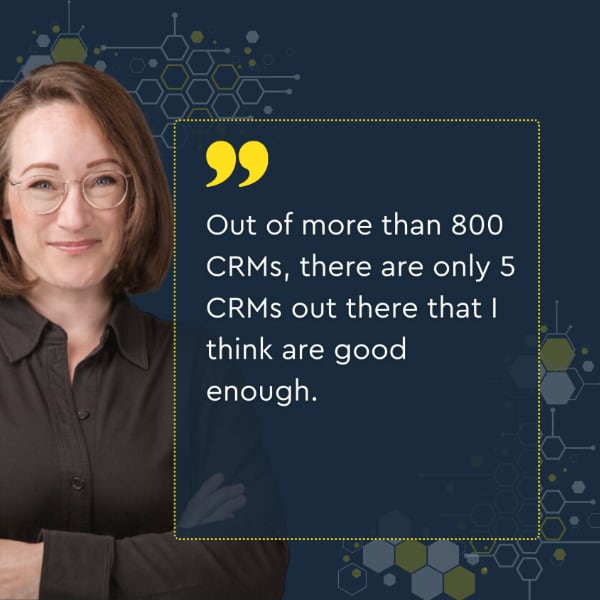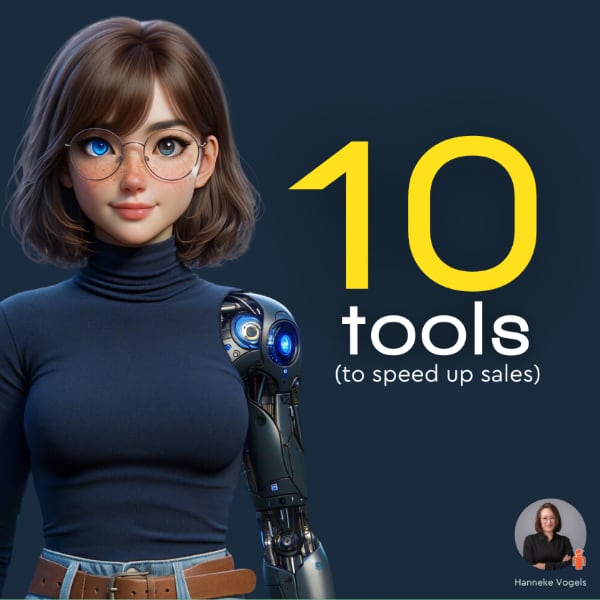About the hot mess, we call CRM data
Hi,
While migrating a client from a not-so-good CRM to one of my favorites, the whole data thing got me thinking. For the last 40 years, we’ve been filling CRM, but we all know the data there is usually incomplete or even close to accurate. That’s a pretty bold statement, but I’ve seen my fair share of CRMs, and I can’t conclude anything else.
With the rise of sales tech and us all using more and more tools, how do we keep control over the data? Because we all want to use it, right?
That was the first thing on my mind. The second one was that the way we ask for information, in CRMs mainly, is not working for us. We have too many open fields that cannot be used in reports, analyses, and all. And if you can’t report on it, why on earth are we asking for this? But if the information is valuable, why don’t we use different field sorts?
And then a third. Most tools and CRMs, including Salesforce, offer the option to create custom fields. These are nifty things, but as I was migrating, I saw unstructured fields that were used scarcely and with no easy way to fill them as they were not visible or categorized. Sometimes, it’s easy to create fields for a specific purpose, but shouldn’t there be rules for it?
It all boils down to a better data strategy
This newsletter hardly covers enough room to help you form a valid data strategy, but I’m more than happy to share some straightforward basic principles you can apply (and we apply them all the time).
1: Data Enrichment is no longer an option
By now, we should realize that it won’t be good enough if we leave it up to people to fill in the information we need. We all need tools to complete the data and take the heavy burden of copy-pasting info into our CRM. The basic principle should be: Can we find this data somewhere?
2: Open text fields, not our friend.
When you want information and dive deep into data to learn something, we need prefixed options—for example, lost reasons for opportunity. Most teams use one drop-down field with some options. I see a lot of “other,” which says nothing. You would want to ask at least two, maybe even three, questions with fixed answers before you offer an open text field.
The basic rule here is: An open field is only used following after at least two predetermined fields.
3: Data structure is work
We cannot keep adding stuff. From now on, we will recurring focus on how our data is structured. That will clean up the mess we make when we are in a hurry and give us new insights into the usages of fields and their purpose. You can delete fields, you know… The rule to be applied is that we go through our data structure once every three months and schedule a reminder for that.
These are just three simple rules to overcome the mess we have in our tools with databases. Because if we do have accurate and plenty of data, here’s what it brings you:
- Better reporting on how deals are going and the movements within sales
- Deep insights into how our team is performing
- And possibly even finding the actual markers of good deals and ideal clients
And there is one more thing. AI needs data to do its work. Within the next 12 months, new tools and AI agents will appear on the market. These tools will be a true gift for your sales team. Maybe even the best use case for AI within sales. But if you want these agents to do their work well, your data needs to be clean.
I’d want to say hurry, but you probably won’t because Q2 is in full effect. Our team can help you speed things up so you can focus on your order intake right now. Think about it.
Interesting posts you might’ve missed
These are the posts I published on LinkedIn that are worth checking out:
What’s a good CRM
An overview of what you need CRM is the fundamental tool for any sales team that wants to speed up their sales tool. But what makes a good CRM? I broke it down in this post.
Tools to speed up
Your team will love you for this In this post, you’ll find an overview of what tools really help to work more efficiently and effectively. It covers pretty much all stages of the process. Read it here.
Spreading the word
As a reader of this newsletter, you already know that sales tech is a game changer for sales. Many of your colleagues are not up to speed, though. I am working hard to change that, to bring sales tech into the arsenal of every sales leader. With the book coming out on May 1st worldwide, sales tech is becoming more approachable for every sales leader.
I do see that one thing is more impactful than anything else: keynotes. Over the last year, I’ve turned tech-hating salespeople into very curious investigators. I’m all over the place in the next few months with ten keynotes lined up.
You can help me spread the word about the importance of sales tech. If you know about an event organizer looking for speakers, say my name! And yes, that’s another Beyonce reference.
A bit more serious: as sales tech is still pretty unknown, getting in touch with organizers is more complicated than it looks. Unless you want to keep all this good stuff for yourself ;-):

About Sales Tech, but not technical
Subscribe now and receive the best insights on successfully applying sales technology to your sales team. The Sales Tech Update lands in your mailbox every four weeks.



